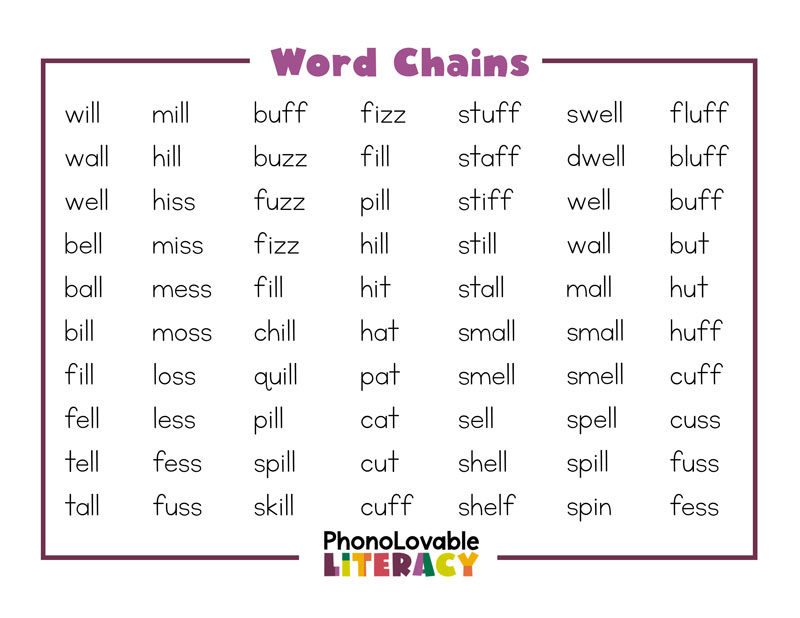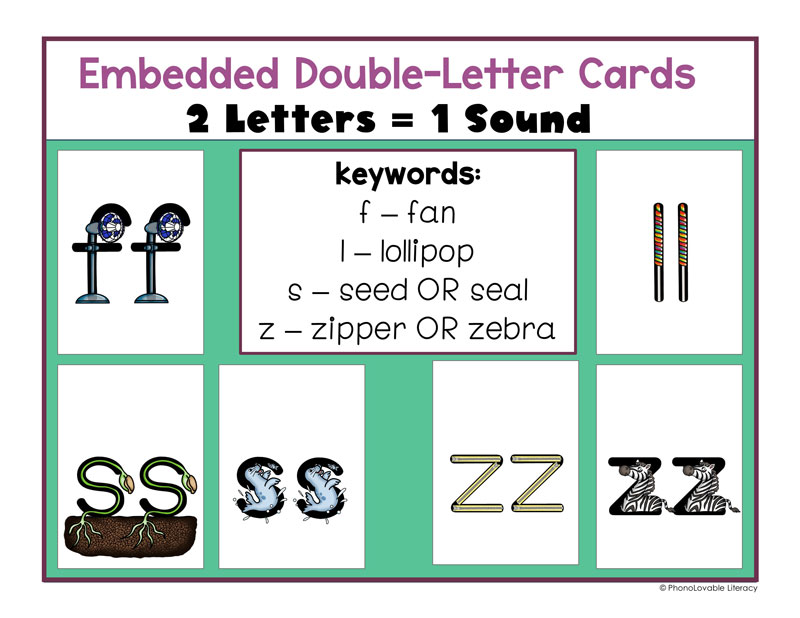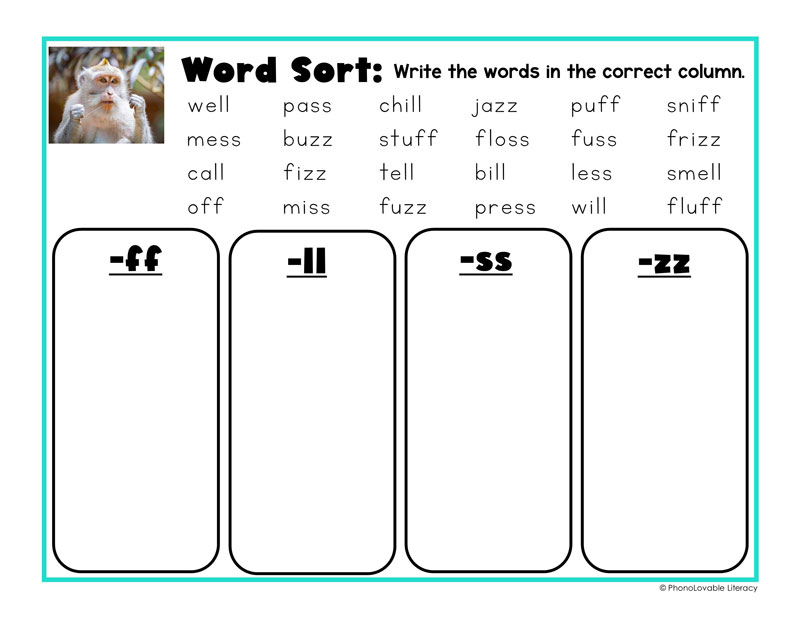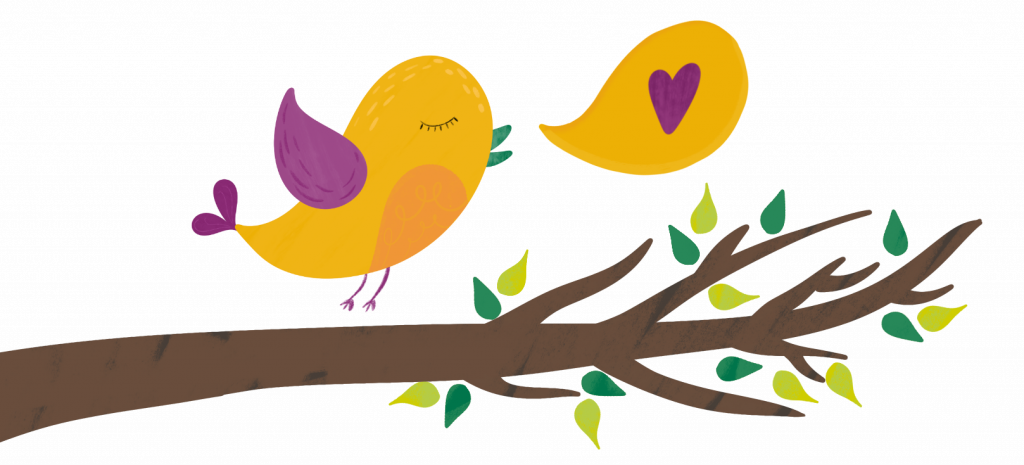Do you have a HARD time following through with healthy habits? Surprisingly, flossing my teeth is the one and only healthy habit that I do every single day without fail, and it doesn’t feel like a chore. Everything else on my list of “must make this a habit because it’s good for me” just feels too hard.
But this isn’t a post about daily habits or actual flossing of teeth. We’re here to talk about making the most out of our daily literacy instruction.
Specifically, we’re here to discuss whether making the most of our literacy instruction should include teaching the so-called “floss” spelling rule.
First, What Is the “FLOSS” Rule?
The “floss” rule is the tendency in English to double the final f, l, s, and z in single syllable words after one vowel (usually a short vowel). It’s called the “floss” rule because the word floss contains 3 out of the 4 letters, also known as bonus letters.

Other mnemonics to help kids remember these “bonus letters” are Sam Likes Friendly Zebras or Jeff Will Miss Buzz. I like this last one because the letters to remember are at the end of each word AND most kids can relate to Buzz Lightyear in the popular movie Toy Story.
Should We Teach the “FLOSS” Spelling Rule?
Some literacy leaders have been busy debating whether or not to teach this (or any) phonics rule. In the meantime, we’ve been busy creating some helpful resources for the double letters f, l, s, and z.
At the end of this article, you’ll find a link to free word lists, word chains, word sorts, and letter cards to practice these double letters with your students in engaging and effective ways.
The main arguments from the “no rules” camp seem to be:
1) The rule is too confusing.
2) The rule has too many exceptions.
3) Teaching the rule takes time away from actually reading, writing, and sorting words.
I’m here to offer another perspective.
Why Teach the FLOSS Rule?
In my 20-plus years of teaching kids to read, I’ve noticed something very interesting. The floss rule is one of the easiest phonics rules to grasp. Students catch on quickly, and it takes less than three minutes to explain it.
It helps students spell more accurately. Teaching the floss rule and incorporating decoding and encoding word chains and word sorts helps cement this spelling pattern into students’ memory. Kids, in my experience, enjoy learning about the English code, as it helps unlock the mysteries of reading and writing. This feels like a relief to many struggling readers!
I like to teach the floss rule BEFORE I teach digraphs. It helps make an easy link from old learning (and something simple like just doubling the letter) to something new (and slightly more complex like 2 DIFFERENT letters making one sound).
Aren’t There Too Many Exceptions?

Actually, no.
Here are some fun facts from The ABC’s and All Their Tricks by Margaret Bishop. Please note that she includes multisyllable words in the following word counts.
- There are 39 words that end in ff and 4 exceptions (if, of, chef, and clef).
- There are 152 words that end in ll. (I can think of 4 exceptions: pal, nil, mil, and gel)
- There are 280 words that end in ss. She notes the exceptions us, yes, this, bus, gas, pus, plus, and thus.
- There are also some common function words that end in a single s (is, as, has, his, was). Note that they all end in a final /z/ sound.
- There are only a few words that end in zz or z. Double Z words are fizz, fuzz, buzz, jazz, and frizz. Single Z words are quiz, whiz, and fez.
Function Words vs. Content Words
You might have noticed that many of the exceptions to the floss rule are those little function words. Words can be classified as either content or function words.
Function words might be prepositions, pronouns, auxiliary verbs, conjunctions, or grammatical articles.
Words that are not function words are called content words and include nouns, most verbs, adjectives, and most adverbs.
Function words are typically short words, as opposed to content words which are usually three or more letters.
Although 99% of the total words in English can be classified as content words, function words are used at a much higher rate, so they are definitely important for kids to read and write easily.
But since they are so common, it’s pretty easy for kids to get lots of exposure and recognize many of the exceptions to the double-letter rule.
“Exceptional” Content Words
Let’s look at some content words that fall in the “floss exceptions” lists.
You’ll find words that are clipped off of longer words: mil for million, gel for gelatin, and gas for gasoline, for example.
And other words like chef and clef we borrowed from another language, such as French.
Finally, most of the other exceptions are words that we rarely use. When’s the last time you used the word fez in daily conversation?
How Can We Maximize the Effectiveness of Our Instruction with This Phonics Skill?
The answer to this question is simple: Integrate phonemic awareness with decoding and encoding using word chains!

A word chain is a list of words that change by only one SOUND at a time. Some examples are pill, mill, fill, fell, fess, and mess.
For decoding practice, you can display letter cards on your table, whiteboard, or pocket chart to make each word.

If you already have your medium and large card sets, check your updates, because the “floss” letter cards have been added!
If you don’t yet have them, you can get your cards at the link below for only $4.
Click here for medium and large embedded mnemonic cards (including the double-letter cards).
We also added the “floss” letter cards to our free small card set.
For encoding practice, you can dictate a word from our word chain list and ask students to make it with magnetic letter tiles or write on a dry-erase board or in a notebook.
Additionally, a nice way for students to practice this skill independently is with word sorts. I know a lot of word sorts involve cutting and gluing, but I find those to be too time-consuming and messy.
I prefer a sort like this one pictured below, because it makes efficient use of learning time and it incorporates writing.

When you join my Free Resource Library at the link below, you’ll find two pages of sorts, as well as 7 word chains and 3 word list mini-posters with “floss” words AND the exceptions.
I hope this article has given you some insights that will help you decide whether or not teaching the “floss” spelling rule is important for your students!

